The Reno 3 series is OPPO’s latest mid-range smartphone lineup that aims to reach all four corners of what it takes to be a well-rounded device. Last year, the Reno 2 received proper recognition with its seemingly bezel-free screen coupled with its ingenious front camera set-up. Now that we have the Reno 3 in our hands let’s find out how this device fairs.
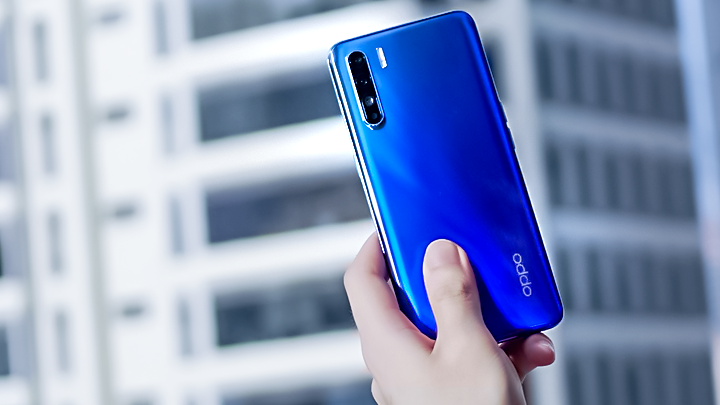
Table of Contents
With a generous display size of 6.4 inches along with its metallic-like finish around the trim, you’d quickly expect this device to pack some weight to it. Still, at 170g (grams) with a thickness of 7.9mm, the OPPO Reno 3 is quite light to carry compared to other phones out there that share a similar design language. Although it looks nothing like the direct successor to the Reno 2, this device still looks very sleek and is nothing short of excellent when it comes to its build quality.
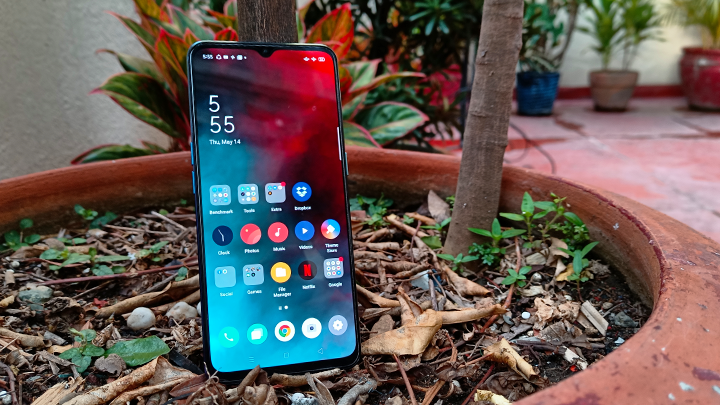
To compensate, OPPO decided to ditch unnecessary elements like glass or metal and has a plastic back panel instead, which has a glossy finish that undoubtedly still looks premium and feels robust to hold. The Reno 3 Series is available in three different color options: Midnight Black, Skywhite and Auroral blue, which is what we have as you can see.

At the front, the device looks pretty sleek with its thin bezels. The bottom bezel is thicker than the rest of the sides but is still considerably thinner than most mid-range phones in this category. The Reno 3 skips out on the pop-up camera that its predecessor had and alternatively used the more dated waterdrop notch design for its front camera housing, which is located right under the in-ear speakers for calls. Unfortunately, we don’t get a notification light either for this device, which is an important feature that I look for in a smartphone—although some probably would not mind this minor issue.

Looking at the back, we can see the metallic gradient finish of the phone that gives a holographic-like reflection under ample lighting, giving that nice aurora effect that is still subtle to the eyes. The edges are also quite curved, making it easy to pick up and grip. You can find the OPPO logo at the lower right corner, and of course, the flash module and primary camera located at the top left, which gets a shiny metallic touch around its edges. Unlike the previous Reno series that have their rear cameras sitting flush against the panel, the Reno 3 has a raised camera module, which means there will be some wobbling when placing its back on a flat surface. Still, slapping on a case should resolve that issue.

On the left, we have your standard volume rocker buttons, along with the dual SIM card tray, with a dedicated MicroSD card slot for extra storage. And on the right, you can find the power button and nothing else. I find it easier when they’re both located just on one side versus having them on two, but some people might prefer this set-up more.

The top sits flush with nothing except the noise-canceling microphone. At the same time, at the bottom we can find the USB-C charging port, the single bottom-firing speaker, primary microphone module and conveniently retains the standard 3.5mm audio jack for all the audiophiles out there (yes!)
The OPPO Reno 3 sports a 6.4-inch FHD+ AMOLED display, an aspect ratio of 20:9, and a pixel density of 411ppi. It isn’t the best display on a smartphone per se, but this is more than enough not only for day to day use but also for multimedia consumption as images are quite crisp with vivid colors at any angle. My only gripe with the display is the screen’s brightness, which can be hard to view sometimes under harsh lighting conditions (i.e., outdoors). Other than that, this device is a treat to watch on.

Audio quality is good and is loud enough, especially when the phone is placed on a flat surface, which gives it a little bit of a fuller sound. But since it is a single bottom-firing speaker, you could run into instances where you might accidentally be covering the speaker grilles with your hands while playing a game or watching a movie, which is a general issue for phones with this type of speaker configuration.
When it comes to the Reno 3’s rear shooter, it has a quad-camera set-up. Specifically, a 13MP Telephoto Lens, a 48MP Ultra-clear Main Camera, an 8MP Wide-angle Lens, and a 2MP Mono Lens, which allows you to take great shots under different lighting scenarios while keeping everything looking as natural as possible.
As for camera quality, the Reno 3 exceeded my initial expectations and performed quite well as I was testing it out in different conditions. Under well-lit environments, we get detailed shots and accurate colors. At the heart of its 48MP camera sensor, the default setting (auto mode) of this smartphone’s camera is 12MP, which is understandable as this helps save storage space by keeping the resolution (4000 x 3000) as low as it can be without cutting out too much detail. Activating the 48MP feature in the options enabled me to zoom in and capture more detail when it came to distant subjects.
Apart from these attributes, OPPO also touts the Reno 3’s capability to display large poster-sized images of up to 4.3m x 3.2m using it’s 108MP Ultra Camera feature. Putting it to the test using the same subject, I was surprised to see how far I was able to zoom in, but halfway through zooming in, pixelation was beginning to get evident. Although it isn’t the best phone when it comes to capturing far objects clearly, quality is still excellent, especially if you do decide to print this on a large poster.
With an 8MP ultra-wide lens, images still look fresh, especially under ample lighting. It is also capable of 109-degree photos after accounting for distortion. If you’re into ultra-wide shots, the Reno 3 is undoubtedly a decent performer.
Trying out their Ultra Night Mode was a bit of a problem, though, as images gave out a heavy blue tint no matter what I tried. I’d like to believe that this is just a software bug as I did not experience these problems on the Pro variant whatsoever. If this is true, then hopefully this issue will be patched up in the next updates. We’ve already reached out to OPPO about this, so we’ll update this part once we’ve received feedback.
As for the front camera, we get a whopping 44MP shooter that is automatically set to the ‘smoothen’ beauty feature by default. Setting it to natural and proceeding to take some selfies right after, I was able to get some high-resolution shots—with hairs (and blemishes) being quite visible. However, it does lack a bit of sharpness, especially when in less favorable lighting conditions. Portrait shots were a hit and miss as the Reno 3 struggles to separate the foreground from the background, but at times they work pretty well.
When it comes to video, the Reno 3 can shoot up to 4k at 30 FPS and comes with an ultra steady stabilization feature that helps keep the shots looking smooth when walking or if you have shaky hands. It even has its video editing software baked into the OS that I not only appreciated but honestly enjoyed using as well.
All in all, it may not be the best shooter on the phone out there in the market; but to put things in a better perspective, I wouldn’t mind leaving my dedicated camera behind to use this one instead if I feel like being extra portable. Keep in mind that since the screen has skinny bezels, you might run into instances where your hand could touch the corners of the screen as you’re taking a picture, which can interrupt your fingers from tapping the shutter button. It is annoying, especially when you miss out on a picture-perfect moment, but I’m sure this is something that you’ll get used to overtime.
The OPPO Reno 3 comes with Color OS 7.0 based on Android 10 out of the box, which is one of the cleanest skins currently out there, in my opinion. By default, the layout is set to ‘standard mode’ where all your apps are located on the home screen, but there is also a setting for ‘drawer mode’ and a system-wide dark mode, which is what I prefer as I enjoy a clean looking home screen.
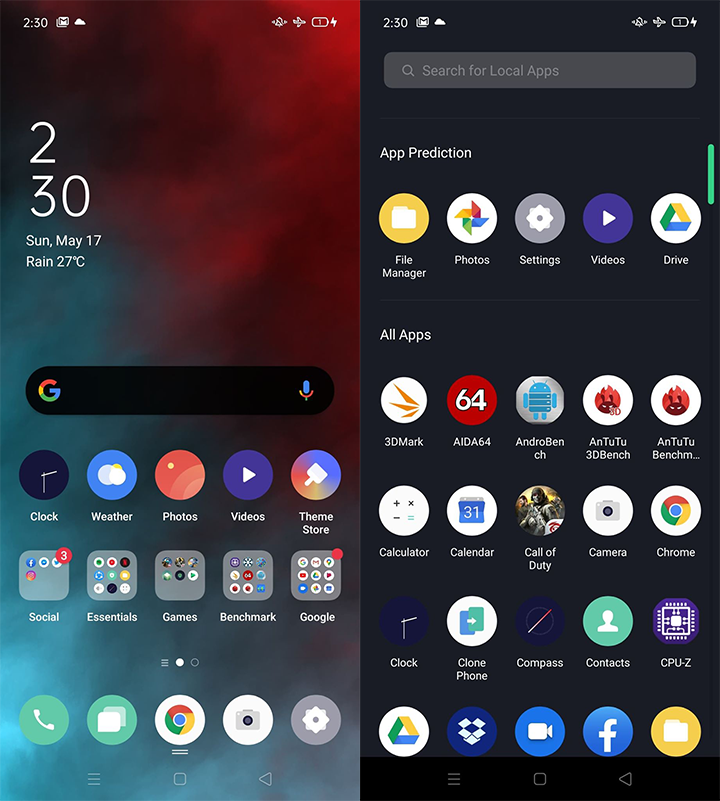
Swiping to the left of the homepage brings you to their Smart Assistant section, where you can access quick functions like open apps and keep track of your step count. You can even subscribe to more services and view your upcoming events, the current weather, and also add your favorite contacts, which are all convenient to have all on one page.
Apart from their dedicated apps and Google services, bloatware was almost zero to none. This is good to see as I tend to download third-party launchers to restore some order to my phone and hide unnecessary apps. And since you usually can’t take out bloatware without a little tinkering, it does take up a certain amount of storage space, which is annoying. I’m glad that I didn’t have to go through any of that with the OPPO Reno 3.
When it comes to sharing files, OPPO has a built-in P2P sharing feature that is capable of sending files quickly not only between their phones but also with cross-brands such as Xiaomi and Vivo, which I think was a good step on their end.
Our unit has a storage capacity of 128GB that was more than enough for me. But if you still feel like you need more, the Reno 3 conveniently has a microSD card slot with up to 256GB of expandable storage.
Heading over to performance, the Reno 3 is equipped with an octa-core MediaTek Helio P90 (MT6779) processor paired with an IMG PowerVR GM9446 GPU, which on paper is labeled as a low-end integrated graphics card for smartphones. As for memory, we get a generous 8GB of RAM, which helps keep running apps snappy and does not lag no matter how many applications I tried to open.
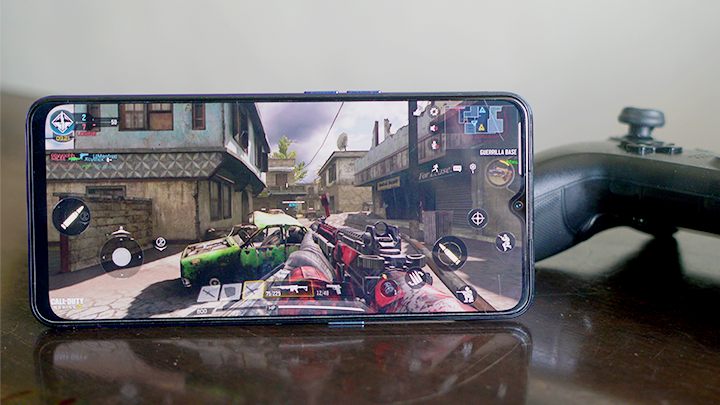
Overall, Reno 3’s overall user experience as a daily driver was snappy and responsive. There were barely any hiccups, and gaming was a breeze. Call of Duty Mobile and PuBG were set to medium by default, but setting them on high didn’t seem to cause any stuttering and maintained a fairly steady framerate—it surely wasn’t enough to bother me at least.
With these results, along with some real-time use, we can safely say that the Reno 3 can easily take on heavy tasks as well as moderate gaming. It doesn’t get too hot to the touch, although your hand might start getting uncomfortable, especially if you’re using it for extended periods while charging. These specs also don’t blow anything out of the water, but apart from getting used to the physical layout, this device generally never gave me headaches.
For biometrics and security, we have an in-display fingerprint scanner similar to the other previous Reno smartphones. If you’re coming from a phone with a rear-mounted capacitive fingerprint sensor, this might take some getting used to as tactile feedback is no longer present to assure your finger is placed in the proper position.
In any case, it is quite responsive once you’ve gotten the hang of where to place your finger. Apart from that, it also offers an extra security measure via face unlock and does a pretty good job at it as it takes about only a second to unlock right after pressing the power button. However, performance in low-light conditions is still questionable as there were times the Reno 3 had a hard time registering my face—a minor issue, in my opinion.
When it comes to battery life, we get a 4,025 mAh capacity, which is a decent size considering how thin and light this phone feels on the hand. On average use, it was able to get me through the whole day and only needed to charge the device during the evening or before going to bed. In our standard video loop test (1080p mp4 video on loop, 50% brightness, 50% volume with headphones and Airplane Mode on) the OPPO Reno 3 lasted a total of 21 hours and 25 minutes of playback, which is impressive, considering that this does have an FHD+ display.
To wrap it all up, the OPPO Reno 3 is an exceptional mid-range phone that performs well in all aspects and is a dependable daily driver that’s more than capable of meeting your needs, be it for work, leisure or play. And with a solid camera build on both the front and back, you can easily capture every moment, especially in well-lit environments. But OPPO should do something about that ultra night mode ‘bug’ if you want to unlock the full potential of its camera and post-processing capabilities.
With a price tag of Php 18,990USD 324INR 27,433EUR 308CNY 2,357, the Reno 3 is placed at a competitive value, considering how well it performs. If you’re a multitasker looking for a power-efficient phone with a great daytime camera, this phone deserves a place in your upcoming wishlist.
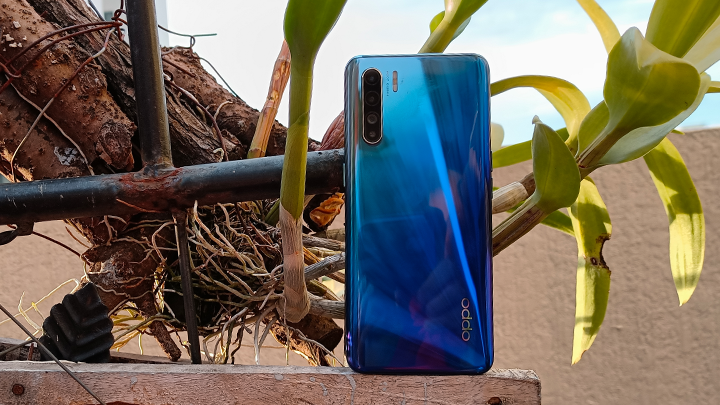
OPPO Reno 3 Specs:
6.4-inch OLED FHD+ (2400 x 1080) display, 411ppi
MediaTek Helio P90 octa-core CPU
IMG PowerVR GM9446 GPU
8GB RAM
128GB storage
microSD up to 256GB
Quad-rear camera:
• 48MP main camera
• 13MP telephoto
• 8MP ultra-wide
• 2MP monochrome sensor
44MP F2.0 front camera
4G LTE
WiFi 802.11 a/b/g/n/ac
Bluetooth 5.0
GPS, A-GPS, GLONASS, GALILEO, BDS
Dolby Atmos speakers
Fingerprint scanner (in-display)
USB-C
3.5mm audio jack
ColorOS 7 (Android 10) w/ Gameboost 2.0
4,025mAh battery with VOOC 3.0 quick charge
160.2 x 73.3 x 7.9 mm
170g

YugaTech.com is the largest and longest-running technology site in the Philippines. Originally established in October 2002, the site was transformed into a full-fledged technology platform in 2005.
How to transfer, withdraw money from PayPal to GCash
Prices of Starlink satellite in the Philippines
Install Google GBox to Huawei smartphones
Pag-IBIG MP2 online application
How to check PhilHealth contributions online
How to find your SIM card serial number
Globe, PLDT, Converge, Sky: Unli fiber internet plans compared
10 biggest games in the Google Play Store
LTO periodic medical exam for 10-year licenses
Netflix codes to unlock hidden TV shows, movies
Apple, Asus, Cherry Mobile, Huawei, LG, Nokia, Oppo, Samsung, Sony, Vivo, Xiaomi, Lenovo, Infinix Mobile, Pocophone, Honor, iPhone, OnePlus, Tecno, Realme, HTC, Gionee, Kata, IQ00, Redmi, Razer, CloudFone, Motorola, Panasonic, TCL, Wiko
Best Android smartphones between PHP 20,000 - 25,000
Smartphones under PHP 10,000 in the Philippines
Smartphones under PHP 12K Philippines
Best smartphones for kids under PHP 7,000
Smartphones under PHP 15,000 in the Philippines
Best Android smartphones between PHP 15,000 - 20,000
Smartphones under PHP 20,000 in the Philippines
Most affordable 5G phones in the Philippines under PHP 20K
5G smartphones in the Philippines under PHP 16K
Smartphone pricelist Philippines 2024
Smartphone pricelist Philippines 2023
Smartphone pricelist Philippines 2022
Smartphone pricelist Philippines 2021
Smartphone pricelist Philippines 2020
Paul says:
Oppo’s Reno 3 is the only game in town if you want the newest midrange in the 15k-20k range, especially since Samsung seems to have put off the A51 from being sold here.
We probably won’t see Vivo launch anything locally soon since they took a big financial hit when they all-out supported a football league in India and didn’t see any return from it due to the games cancellation by the coronavirus.
Dave says:
I’m curious how this stacks up against the Samsung A51 since they are in the same ballpark price at the Smart Online Store via postpaid plan. I’m still on the fence which one i’m going to get once GCQ hits and Smart Stores open lol.
Linda says:
Does the main camera have OIS? No one seems to mention that. If it doesn’t, then its a step-down over the Reno 2… I think the cameras are more similar to the Reno 2z? I wonder why the decision on Oppo’s part to totally change the signature language design of the Reno series and producing downgrades instead. It seems the Reno 3 series is particularly focused on its selfie camera with that 44mp resolution and Night Mode.
Angelica says:
Hello! I really like the Reno 3 but I have read that it doesn’t feature an FM radio. Is it true? Cos that’s a game changer for me. Thank you!